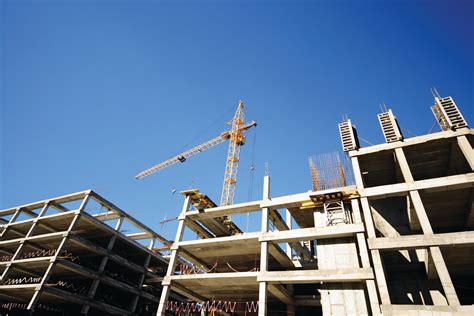The construction industry has long been dependent on traditional methods and materials, but the recent surge in technological advancements has significantly impacted the way we build and design structures. One area that has seen substantial improvements is concrete construction. With the integration of cutting-edge technologies, concrete construction has become more efficient, sustainable, and innovative. In this article, we will explore five ways tech advances concrete construction.
Concrete is a fundamental building material that has been used for centuries, but its production and application have been limited by traditional methods. However, with the advent of new technologies, concrete construction has become more sophisticated, allowing for increased precision, reduced waste, and enhanced structural integrity.
Advances in Concrete Materials
Self-Healing Concrete
One significant advancement in concrete materials is the development of self-healing concrete. This innovative material is designed to repair itself automatically, reducing the need for costly repairs and maintenance. Self-healing concrete contains bacteria that produce calcite, a natural substance that can fill cracks and restore the concrete's structural integrity.

Robotics and Automation
Robot-Assisted Concrete Finishing
Robotics and automation have transformed the concrete construction industry, enabling faster and more precise construction processes. Robot-assisted concrete finishing is one such technology that uses robotic arms to apply, spread, and finish concrete surfaces. This technology reduces labor costs, improves surface quality, and increases construction speed.

Digitalization and Prefabrication
BIM and Prefabricated Concrete Components
Digitalization has revolutionized the construction industry, enabling the creation of detailed digital models and simulations. Building Information Modeling (BIM) is a digital platform that allows architects, engineers, and contractors to collaborate and visualize projects before construction begins. Prefabricated concrete components are another innovation that has improved construction efficiency and reduced waste.

3D Printing and Additive Manufacturing
3D Printed Concrete Structures
3D printing and additive manufacturing have transformed the construction industry, enabling the creation of complex shapes and structures. 3D printed concrete structures are one such innovation that uses a robotic arm to deposit concrete layer by layer, creating intricate designs and reducing waste.

IoT and Sensor Technologies
Smart Concrete Sensors
The Internet of Things (IoT) and sensor technologies have improved the monitoring and maintenance of concrete structures. Smart concrete sensors are one such innovation that uses embedded sensors to monitor temperature, humidity, and other environmental factors, enabling real-time monitoring and predictive maintenance.

Gallery of Concrete Construction Innovations






Frequently Asked Questions
What is self-healing concrete?
+Self-healing concrete is a type of concrete that contains bacteria that produce calcite, a natural substance that can fill cracks and restore the concrete's structural integrity.
How does robotics and automation improve concrete construction?
+Robotics and automation enable faster and more precise construction processes, reducing labor costs and improving surface quality.
What is the benefit of using BIM in concrete construction?
+BIM enables the creation of detailed digital models and simulations, allowing architects, engineers, and contractors to collaborate and visualize projects before construction begins.
In conclusion, technological advancements have significantly improved the concrete construction industry, enabling faster, more precise, and sustainable construction processes. From self-healing concrete to robotics and automation, digitalization, 3D printing, and IoT technologies, the future of concrete construction is exciting and promising. As the construction industry continues to evolve, it is essential to stay informed about the latest innovations and advancements that can improve construction efficiency, reduce waste, and enhance structural integrity.
We encourage you to share your thoughts and comments on this article and explore the possibilities of technological advancements in concrete construction.
